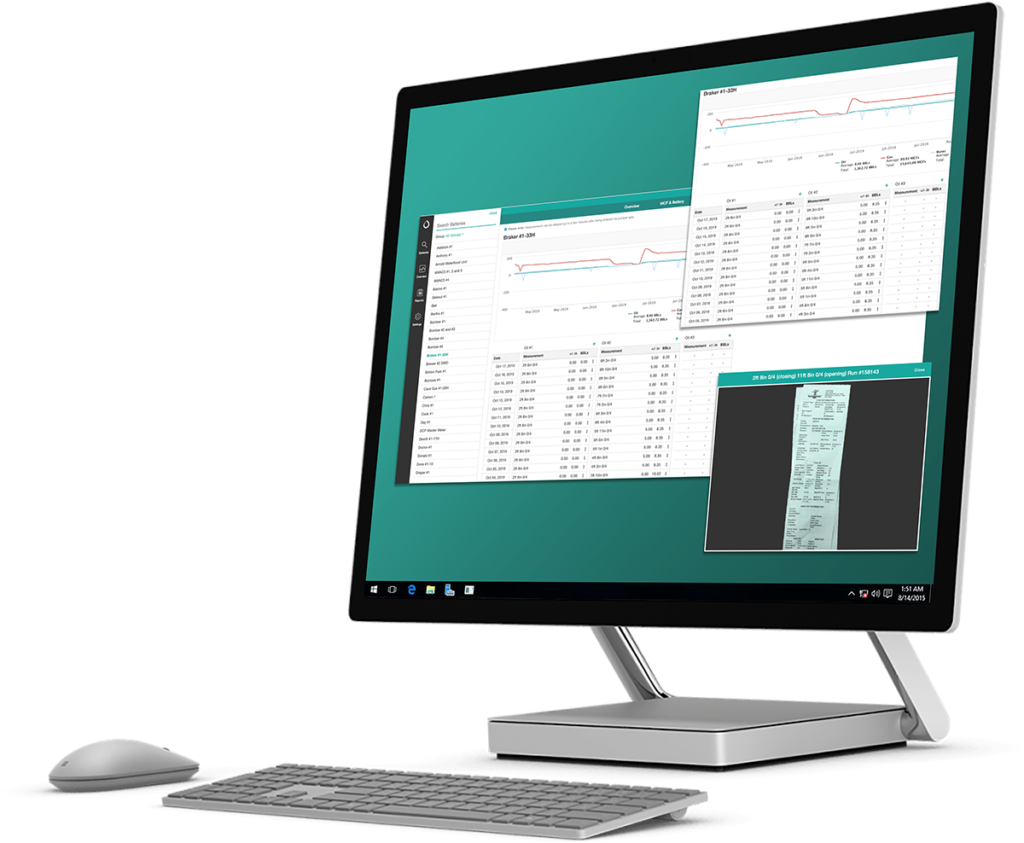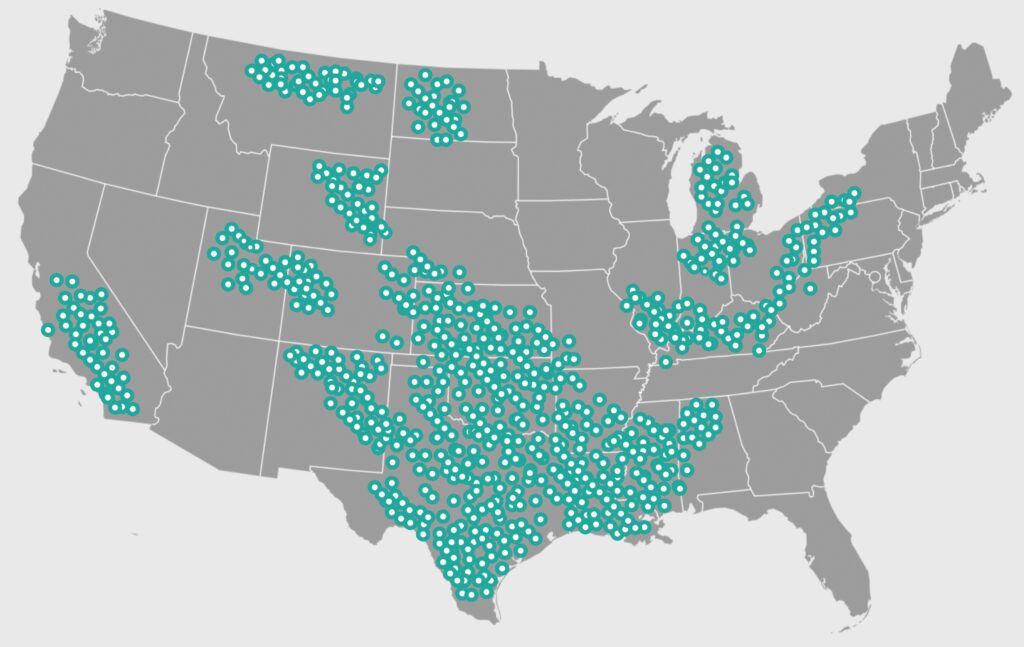Just like no two people are alike, neither are two wells. It doesn’t matter if the wells are located in the same area, utilize the same equipment, or if they are drilled into with the same oil-bearing formation; the outcomes of the drilling procedure relies on a wide variety of variables. This can include: people, equipment, company procedures, and more; and in order to be a successful lease pumper, you will need to understand these eight important areas.

Know Your Contractors
Every signed oil well drilling contract includes some form of conditions and agreements. For example, the drilling rig contractor will agree to a specific drilling depth, financial obligations, or where the well will be drilled. Once everything has been agreed upon, the drilling rig will be moved in to prepare for drilling. This is most commonly referred to as the MIRU, or the “Move In and Rig Up”; and in most cases, will include drilling with a jackknife rig instead of the derricks that are built in place. Other important personnel often comprise of:
Company Representative
Typically the company representative is one of the senior members of the crew (such as the tool pusher), the owner of the company (this generally occurs in small oil companies.), or another official representative for the company. Since the company pays the full cost of drilling and owns the new well once completed, the company representative will oversea every operational aspect from building roads to installation of the wellhead. In many cases, the company representative also makes the final decisions regarding the formation tests.
Derrick Worker
Commonly referred to as the derrick man, a derrick worker cannot be afraid of heights. This position requires working high above the floor, and is used during regular operations to help when the pipe is being pulled or run. In many of the modern rigs, a rack will vertically hold various sections of drill pipe along the side of the derrick. Each is then added to the drilling string as the bit makes it way deeper and deeper into the ground.
One of the common duties of derrick workers is to add (or remove) sections of pipe from the drill string. During drilling, the pipe is added the deeper into the ground they drill; while sections are removed from the drill string and pulled out of the ground once the drilling has been complete. Sections of pipe are also removed for replacement, or to deal with any drilling issues.
In order to avoid any unnecessary risks, sections of pipe are raised or lowered using an elevator. During transport, the pipe is stored between two sections (or fingers) in the rack. This area is often referred to as the monkey board.
Derrick worker’s duties can also include supervising and assisting:
- Floor Workers with Cleaning and Maintaining the Rig
- Equipment Repairs
- Catches and Labels Mud Samples
- Operate the Draw Works (see driller)
- And Other Drilling Duties Helpful in Preparing for a Possible Promotion
Driller
The rig crew typically consists of four to five people, with the driller in charge of the group. He/she will generally operate the draw works (a structure made of cables and pulleys used to run the pipe into the well), and often performs the tool pusher’s duties when they are away or off work.
Floor Workers
While running and pulling pipe, there are always two floor workers. These two personal are generally referred to as either roughnecks or floor hands, with the more experienced worker being referred to as the lead. The lead operates the lead tong, while the other floor worker operates the back-up tong (or back-up). In most cases, these workers are the most inexperienced members of the rig crew.
Motor Man
In a five person rig crew, the fifth individual is commonly referred to as the motor worker (also known as the motor man). The motor man is one of the most experienced workers, and will often relieve the driller during times off. He/she may also be required to catch drilling samples.
Tool Pusher
Every drilling company provides a supervisor for the rig during the drilling of the well. While more and more crews have taken on titles like drilling engineer, production engineer, or other comparable titles; at one point in time, this individual was only referred to as the tool pusher.
The tool pusher is in charge of both the drilling rig, and every moving part on that rig. It is their job to purchase and rig supplies, supervise the rig personnel, and to oversea all the drilling procedures. Due to today’s technological advances making communicating easier, tool pushers may also be in charge of more than one rig at a time; and therefore, may not always be present at a specific location. Due to the vital importance of having this type of supervision required for around-the-clock drilling operations, the tool pusher is often supplied some sort of small domicile (ex. small mobile home) at the well site. This allows them the ability to remain onsite for days at a time in the event any problems arise.
Drilling the Well
While the rig is moved onto the lease for drilling a new well, a lease pumper can often be required to handle operation related duties. For example, most drilling rigs utilize anywhere from two to four steel mud pits. These pits (generally lined with some form of plastic liner) are used to hold any excess fluids or drilling cuttings; with the first pit will have a shale shaker built on the top to permit the drilling mud to fall through the screen.
Figure 1. Example of a Tri-Cone Drilling Bit
During drilling operations, lease pumpers are often responsible for looking out for the landowner’s interests, especially for contracted drilling. This includes making sure the mud pit is properly fenced. Otherwise, the livestock could try to get into the pit to drink the water, or eat any trash or greasy rags left behind. However, due to the fact mud pits can take several weeks or even months to dry out enough to be leveled out; this duty doesn’t end once the hole is finished. In fact, after the rig is no longer active, the landowner will still anticipate the lease pumper to preserve a clean and well-fenced pit to protect their livestock from harm.
Downhole Measurements
Another common responsibility of lease pumpers is maintaining the well records, with one of the most important sets being the downhole measurements. These measurements document the dimensions of every single section of pipe used in the well, and are vital to knowing the size of pumps, tools, or other supplies required to pass through or be used on the pipe (including any required components to complete the installation).
These necessary supplies are not named for their pipe design, but for the purpose of the pipe or where it will be used. These important components can include:
- Casing – Refers to any pipe(s) that are cemented into position, and is measured by the outside diameter.
- Tubing – Refers to the moveable strings of pipe that can be easily pulled and run back in whenever working the well. The tubing is located inside of the casing, and is measured by the outside diameter.
- Line Pipe – Refers to pipe(s) that are used on the surface and into the well. This type of pipe is measured by the inside diameter.
In order to accurately determine the location of the perforations, the depth of the well, or various other vital features to the production; downhole measurements must be captured accurately. Each measurement is made to the nearest one hundredth of a foot (all rig tapes use the same measurement system) to allow numbers to easily be used by a conventional calculator. This would be equivalent to taking each foot and dividing it into ten equal parts, and then taking each of those sections and dividing them into ten more parts. For example, if you have three pipe lengths measuring: 20 feet 3/32″, 20; 4 5/16″, and 19′ 9 1/4″; using this system, your measurements would be: 20.09, 20.36, and 19.77.
As the crew drills the well, the distances are calculated starting from the top of kelly bushing (refers to the sliding bushing located on the drilling rig floor on top of the rotary table that permits the drill kelly to go down through it when the pipe is turning and the hole is drilled.
Once the casing pipe is permanently cemented into the hole (or set) and either the braiden head or wellhead installed, the measurements from the top of the wellhead to the top of the kelly bushing are calculated and subtracted from all drilling records. This allows precise well records for once the drilling rig is no longer there.
The Surface String of Casing
Since the majority of the water we drink comes from underground fresh water reservoirs, one of the most important considerations in drilling a new well is protecting any fresh water areas. Therefore, the string of surface casing bottom has to properly extend below the fresh water zones. The surface hole must also be drilled to a depth deep enough for it to pass through any loose materials you may encounter until the stable rock is encountered, and the surface pipe is set.
Below the surface casing is placed (aka ‘run in the hole’), it is diligently inspected and measured; and often times, each of the couplings are welded to help prevent any future leaks from occurring. Once complete, the scratchers and centralizers (bow shaped strips of steel used to hold the pipe in place away from the walls and in the center of the hole) are installed on the pipe (See Figure 2).
Figure 2. Example of a Casing Centralizer
Scratchers are used to help the cement to be able to bond the pipe and the walls of the hold. Their job is to remove the caked-on drilling mud, and it is done by raising and lowering the pipe several times into the hole to allow the scraper to loosen the material. As the crew pumps the cement down into the hole (going through the casing) and out the bottom, it will rise up towards the surface on the outside of the casing creating a good cemented bond all the way around the entire pipe from the bottom to the surface. The pipe is then left in place even when the well is plugged.
Figure 3. To remove the drilling mud off the walls of the hole, scratchers are used.
Intermediate Strings of Casing
Depending upon the depth of the well, some may require a second string of pipe above the production reservoir. (This section is also cemented into place.) Often times, this second string of casing is installed to correct any adverse hole conditions. These reasons could include: gas, heaving, high pressure, lost circulation zones, or sloughing.
Each and every additional string of casing placed in the hole will use a smaller bit. This allows for the new bit to go inside the new casing and to drill out through the bottom. In most cases, it will go all the way to the reservoir; yet in deeper wells, rig crews may install string of casings comprising of each string of casing successively getting smaller in diameter. This is typically completed for financial reasons, or due to the physical limits of the casing string.
To begin, a moderately large casing is used from the surface and partially down into the hole; following it with a slightly smaller string of drill pipe and bit. At the bottom of each string of casing, a casing hanger is installed to permit the next section of pipe to be lowered into place through the current section, before it is firmly attached and cemented permanently into place. As the crew runs the casing, they may also use a technique known as floating the pipe in; which requires filling the casing with drilling mud to prevent it from collapsing under the extremely high external pressure.
Drilling Breaks and Drill Stem Testing
When a drilling break (an indicator the formation is more porous and cause the drilling bit to cut into the earth in an abrupt increase) occurs one of the more imperative decisions the drilling supervisor must make is determining how to proceed. Often times, this permeable layer can hold different hydrocarbons (ex. natural gas, crude oil). Thankfully by taking everything into consideration (ex. the location and/or distance to the bottom of the well, how fast the crew is operating the pump, the amount of space outside of the drill pipe, etc.) the crew and/or supervisor can determine exactly how long it will be before the drilling break zone cuttings are able to reach the surface.
Once these cuttings arrive, a crew member will catch samples and use these to test under a black light (aka ultraviolet light). If crude oil is present, the black light will cause the sample to glow. Unfortunately, high mud pressure can prevent a good cutting sample from reaching the surface. To overcome this issue, one answer is to perform drill stem testing.
During this test, the drill pipe will take the place of the tubing string. However, because this type of testing requires the rig to stop drilling the new hole until it is complete, the production company typically decides whether or not to run the test.
Typically time and/or allowances are allotted in the contract to provide the rig crew time to run the pipe and cement it into place. Generally during any time the rig stops drilling, the lease operator (or production company) will compensate the crew by paying by the hour, or through some other appropriate amount of compensation for the rig crew during any time spent cementing, running pipe, and/or waiting for the cement to set (drilling reports often refer to this as waiting on cement).
To help keep the crew busy, during this time the members often:
- Arrange/Rearrange the Drill Pipe Racks
- Clean the Rig Floor
- Get Smaller Drill Bits Ready
- Stock Necessary Supplies for When Drilling Begins
- And more
Maintaining the Hole Full Gauge and the Packed Hole Assembly
As with any type of drilling, as the bit is used the tooth sharpness and diameter will slowly wear away; and when the bit diameter shrinks, so does the diameter of the hole being drilled. To avoid this issue, a reamer is placed right behind the bit. This sequence of rolling cones rotates is the bit turns, and widens the hole slightly larger. Typically this will take one time of reaming the hole to be sufficient.
Think of this way. Bits can wear at various points, including the shoulders. If a reamer was not used when the crew pulls the drill pipe to run the new bit, they would have problems getting the new bit back to the bottom of the hole.
Figure 4. Reamers are used behind the bit to maintain the hole diameter even when the bit begins to wear.
Drilling a Straight Hole
Due to factors like formation density, uneven drill bit wear, drill pipe flexing, and various other situations that can cause the hole to deviate from the its true vertical depth (the vertical distance from the well to the surface); you typically are unable to drill a straight hole to the oil reservoir. Nonetheless, the hole is still generally viable for oil production.
For the best results when drilling the hole, an incessant series of decisions will be used to adjust the drilling method. This includes considering all aspects from getting the best life and performance out of your drilling bits, to the location of the hole, to what choices you should make to ensure good drilling progress. Typically there are two main ways to control these types of factors:
- the rotational speed of the bit, and
- the amount of applied weight
In most cases, the maximum penetration rate (and the straight hole) are maintained by applying the correct bit, drill pipe weight, and bit RPM. You need a good balance of these factors to determine the proper adjustments for your conditions (such as formation density or any hole depth changes).
Any formation the drill bit comes across that is not horizontal, tends to climb uphill. This can easily be solved by applying more drill collars on top of the reamer. The extra drill collars will add more weigh, and thus make the pipe more inflexible. Sadly, drill collars will not solve all your drilling issues. For instance, another common issue is when the drill bit gets stuck in the grooves (also referred to as key seats) located on the sides of the hole.
Key seats are created when the drill pipe bends under the high pressures and rubs along the sides of the hole. The connections (the lined ends of the drill pipe) are generally larger in diameter than the drill pipe’s body (or tube). Since these connections are larger than the rest of the pipe’s diameter, it is common to get stuck in the key seats. This is especially true when the rig crew begins to remove the drill bit back out of the hole.
Formations never have the same density throughout the entire distance to the production zone; and because of this, bit wear, and flexes in the drill pipe, it is very rare the rig crew will experience a hole that goes straight down. In fact, most cases will generally have a twisted profile like a corkscrew; and due to this, the tubing string is likely to rub against the casing when it comes into contact with the various bends. This rubbing will eventually cause the tubing or casing to wear, and in turn, produces even more problems for drilling operations; such as:
- tubing collars can be worn to the point where they fracture, or
- tubing string caving into the well.
Is your appetite for oil & gas operating knowledge insatiable like ours? 😀 If so, check out these related articles, Where is Crude Oil Found? The Structure of Oil-Bearing Formations… and, 6 Areas You Should Know About Completing Any Oil and Gas Well – they’ll be sure to pump you up!!!











